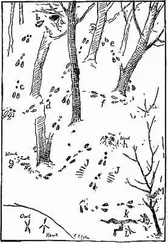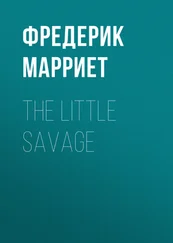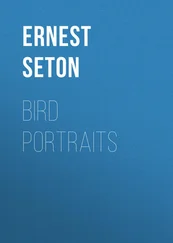Ernest Seton - Two Little Savages
Здесь есть возможность читать онлайн «Ernest Seton - Two Little Savages» весь текст электронной книги совершенно бесплатно (целиком полную версию без сокращений). В некоторых случаях можно слушать аудио, скачать через торрент в формате fb2 и присутствует краткое содержание. Год выпуска: 2004, Жанр: Детские приключения, на английском языке. Описание произведения, (предисловие) а так же отзывы посетителей доступны на портале библиотеки ЛибКат.
- Название:Two Little Savages
- Автор:
- Жанр:
- Год:2004
- ISBN:нет данных
- Рейтинг книги:5 / 5. Голосов: 1
-
Избранное:Добавить в избранное
- Отзывы:
-
Ваша оценка:
- 100
- 1
- 2
- 3
- 4
- 5
Two Little Savages: краткое содержание, описание и аннотация
Предлагаем к чтению аннотацию, описание, краткое содержание или предисловие (зависит от того, что написал сам автор книги «Two Little Savages»). Если вы не нашли необходимую информацию о книге — напишите в комментариях, мы постараемся отыскать её.
Two Little Savages — читать онлайн бесплатно полную книгу (весь текст) целиком
Ниже представлен текст книги, разбитый по страницам. Система сохранения места последней прочитанной страницы, позволяет с удобством читать онлайн бесплатно книгу «Two Little Savages», без необходимости каждый раз заново искать на чём Вы остановились. Поставьте закладку, и сможете в любой момент перейти на страницу, на которой закончили чтение.
Интервал:
Закладка:
Odd things that he found in the woods he would bring to his shanty: curled sticks, feathers, bones, skulls, fungus, shells, an old cowhorn—things that interested him, he did not know why. He made Indian necklaces of the shells, strung together alternately with the backbone of a fish. He let his hair grow as long as possible, employing various stratagems, 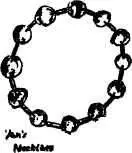 even the unpalatable one of combing it to avoid the monthly trim of the maternal scissors. He lay for hours with the sun beating on his face to correct his colour to standard, and the only semblance of personal vanity that he ever had was pleasure in hearing disparaging remarks about the darkness of his complexion. He tried to do everything as an Indian would do it, striking Indian poses, walking carefully with his toes turned in, breaking off twigs to mark a place, guessing at the time by the sun, and grunting "Ugh" or "Wagh" when anything surprised him. Disparaging remarks about White-men, delivered in supposed Indian dialect, were an important part of his pastime. "Ugh, White-men heap no good" and "Wagh, paleface—pale fool in woods," were among his favourites.
even the unpalatable one of combing it to avoid the monthly trim of the maternal scissors. He lay for hours with the sun beating on his face to correct his colour to standard, and the only semblance of personal vanity that he ever had was pleasure in hearing disparaging remarks about the darkness of his complexion. He tried to do everything as an Indian would do it, striking Indian poses, walking carefully with his toes turned in, breaking off twigs to mark a place, guessing at the time by the sun, and grunting "Ugh" or "Wagh" when anything surprised him. Disparaging remarks about White-men, delivered in supposed Indian dialect, were an important part of his pastime. "Ugh, White-men heap no good" and "Wagh, paleface—pale fool in woods," were among his favourites.
He was much influenced by phrases that caught his ear. "The brown sinewy arm of the Indian," was one of them. It discovered to him that his own arms were white as milk. There was, however, a simple remedy. He rolled up his sleeves to the shoulder and exposed them to the full glare of the sun. Then later, under the spell of the familiar phrase, "The warrior was naked to the waist," he went a step further—he determined to be brown to the waist—so discarded his shirt during the whole of one holiday. He always went to extremes. He remembered now that certain Indians put their young warriors through an initiation called the Sun-dance, so he danced naked round the fire in the blazing sun and sat around naked all one day.
He noticed a general warmness before evening, but it was at night that he really felt the punishment of his indiscretion. He was in a burning heat. He scarcely slept all night. Next day he was worse, and his arm and shoulder were blistered. He bore it bravely, fearing only that the Home Government might find it out, in which case he would have fared worse. He had read that the Indians grease the skin for sunburn, so he went to the bathroom and there used goose grease for lack of Buffalo fat. This did give some relief, and in a few days he was better and had the satisfaction of peeling the dead skin from his shoulders and arms.

Yan made a number of vessels out of Birch bark, stitching the edges with root fibers, filling the bottom with a round wooden disc, and cementing the joints with pine gum so that they would hold water.
In the distant river he caught some Catfish and brought them home—that, is, to his shanty. There he made a fire and broiled them—very badly—but he ate them as a great delicacy. The sharp bone in each of their side fins he saved, bored a hole through its thick end, smoothed it, and so had needles to stitch his Birch bark. He kept them in a bark box with some lumps of resin, along with some bark fiber, an Indian flint arrow-head given him by a schoolmate, and the claws of a large Owl, found in the garbage heap back of the taxidermist's shop.
One day on the ash heap in their own yard in town he saw a new, strange bird. He was always seeing new birds, but this was of unusual interest. He drew its picture as it tamely fed near him. A dull, ashy gray, with bronzy yellow spots on crown and rump, and white bars on its wings. His "Birds of Canada" gave no light; he searched through all the books he could find, but found no clew to its name. It was years afterward before he learned that this was the young male Pine Grosbeak.
Another day, under the bushes not far from his shanty, he found a small Hawk lying dead. He clutched it as a wonderful prize, spent an hour in looking at its toes, its beak, its wings, its every feather; then he set to work to make a drawing of it. A very bad drawing it proved, although it was the labour of days, and the bird was crawling with maggots before he had finished. But every feather and every spot was faithfully copied, was duly set down on paper. One of his friends said it was a Chicken-hawk. That name stuck in Yan's memory. Thenceforth the Chicken-hawk and its every marking were familiar to him. Even in after years, when he had learned that this must have been a young "Sharp-shin," the name "Chicken-hawk" was always readier on his lips.
But he met with another and a different Hawk soon afterward. This one was alive and flitting about in the branches of a tree over his head. It was very small—less than a foot in length. Its beak was very short, its legs, wings and tail long; its head was bluish and its back coppery red; on the tail was a broad, black crossbar. As the bird flew about and balanced on the boughs, it pumped its tail. This told him it was a Hawk, and the colours he remembered were those of the male Sparrow-hawk, for here his bird book helped with its rude travesty of "Wilson's"  drawing of this bird. Yet two other birds he saw close at hand and drew partly from memory. The drawings were like this, and from the picture on a calendar he learned that one was a Rail; from a drawing in the bird book that the other was a Bobolink. And these names he never forgot. He had his doubts about the sketching at first—it seemed an un-Indian thing to do, until he remembered that the Indians painted pictures on their shields and on their teepees. It was really the best of all ways for him to make reliable observation.
drawing of this bird. Yet two other birds he saw close at hand and drew partly from memory. The drawings were like this, and from the picture on a calendar he learned that one was a Rail; from a drawing in the bird book that the other was a Bobolink. And these names he never forgot. He had his doubts about the sketching at first—it seemed an un-Indian thing to do, until he remembered that the Indians painted pictures on their shields and on their teepees. It was really the best of all ways for him to make reliable observation.
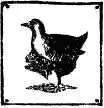 The bookseller of the town had some new books in his window about this time. One, a marvellous work called "Poisonous Plants," Yan was eager to see. It was exposed in the window for a time. Two of the large plates were visible from the street; one was Henbane, the other Stramonium. Yan gazed at them as often as he could. In a week they were gone; but the names and looks were forever engraved on his memory. Had he made bold to go in and ask permission to see the work, his memory would have
The bookseller of the town had some new books in his window about this time. One, a marvellous work called "Poisonous Plants," Yan was eager to see. It was exposed in the window for a time. Two of the large plates were visible from the street; one was Henbane, the other Stramonium. Yan gazed at them as often as he could. In a week they were gone; but the names and looks were forever engraved on his memory. Had he made bold to go in and ask permission to see the work, his memory would have 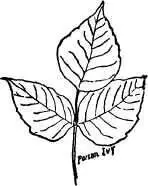 seized most of it in an hour.
seized most of it in an hour.
IX
Tracks
In the wet sand down by the edge of the brook he one day found some curious markings—evidently tracks. Yan pored over them, then made a life-size drawing of one. He shrewdly suspected it to be the track of a Coon—nothing was too good or wild or rare for his valley. As soon as he could, he showed the track to the stableman whose dog was said to have killed a Coon once, and hence the man must be an authority on the subject.
"Is that a Coon track?" asked Yan timidly.
"How do I know?" said the man roughly, and went on with his work. But a stranger standing near, a curious person with shabby clothes, and a new silk hat on the back of his head, said, "Let me see it." Yan showed it.
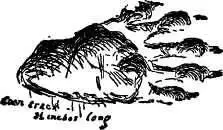
"Is it natural size?"
"Yes, sir."
"Yep, that's a Coon track, all right. You look at all the big trees near about whar you saw that; then when you find one with a hole in it, you look on the bark and you will find some Coon hars. Then you will know you've got a Coon tree."
Читать дальшеИнтервал:
Закладка:
Похожие книги на «Two Little Savages»
Представляем Вашему вниманию похожие книги на «Two Little Savages» списком для выбора. Мы отобрали схожую по названию и смыслу литературу в надежде предоставить читателям больше вариантов отыскать новые, интересные, ещё непрочитанные произведения.
Обсуждение, отзывы о книге «Two Little Savages» и просто собственные мнения читателей. Оставьте ваши комментарии, напишите, что Вы думаете о произведении, его смысле или главных героях. Укажите что конкретно понравилось, а что нет, и почему Вы так считаете.

